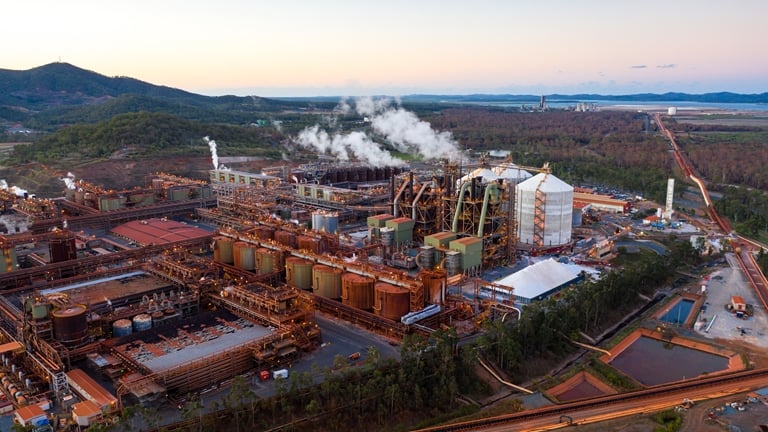Japan’s Sumitomo Corporation will build a 2.5 MW renewable hydrogen pilot plant at Gladstone as part of Rio Tinto’s plan to trial the use of hydrogen as a replacement for gas in the calcination process as it seeks to minimise carbon emissions at its Yarwun alumina refinery.
Rio Tinto said the Yarwun Hydrogen Calcination Pilot Demonstration Program will be the first-of-its-kind deployment of hydrogen calcination technology in the world.
The project will consist of a 2.5 MW onsite electrolyser, a hydrogen storage facility and the retrofit of a hydrogen-capable burner to one of the refinery’s four calciners, which are the large industrial ovens used in alumina refining.
The project will be co-funded through a $32.1 million grant from the Australian Renewable Energy Agency (ARENA).
Sumitomo will own and operate the 2.5 MW electrolyser and supply the hydrogen to Rio Tinto. No details about the power source for the plant were provided but Sumitomo said the electrolyser will have a production capacity of more than 250 tonnes of renewable hydrogen annually.
The company said it has already completed its front end engineering and design study (FEED) and construction will start in 2024. The hydrogen plant is expected to be commissioned in 2025.
Rio Tinto Aluminium Pacific Operations Managing Director Armando Torres said if successful, the project will demonstrate the viability of using renewable hydrogen in the calcination process and could pave the way for adoption at scale across the industry worldwide.
“This pilot plant is an important step in testing whether hydrogen can replace natural gas in Queensland alumina refineries,” he said.
ARENA Chief Executive Officer Darren Miller said the project could be a “game changer” for decarbonising one of Australia’s most emissions-intensive industries.
Alumina refining accounts for about 3% of Australia’s emissions and is an energy-intensive process, consuming more than twice the energy used by Tasmania.
“If this pilot project is successful, it could be a game changer for Australian alumina production, paving the way for deployment across the industry, and underscoring the importance of low-cost green hydrogen to decarbonise our largest industrial emitters,” Miller said.
This content is protected by copyright and may not be reused. If you want to cooperate with us and would like to reuse some of our content, please contact: editors@pv-magazine.com.









By submitting this form you agree to pv magazine using your data for the purposes of publishing your comment.
Your personal data will only be disclosed or otherwise transmitted to third parties for the purposes of spam filtering or if this is necessary for technical maintenance of the website. Any other transfer to third parties will not take place unless this is justified on the basis of applicable data protection regulations or if pv magazine is legally obliged to do so.
You may revoke this consent at any time with effect for the future, in which case your personal data will be deleted immediately. Otherwise, your data will be deleted if pv magazine has processed your request or the purpose of data storage is fulfilled.
Further information on data privacy can be found in our Data Protection Policy.